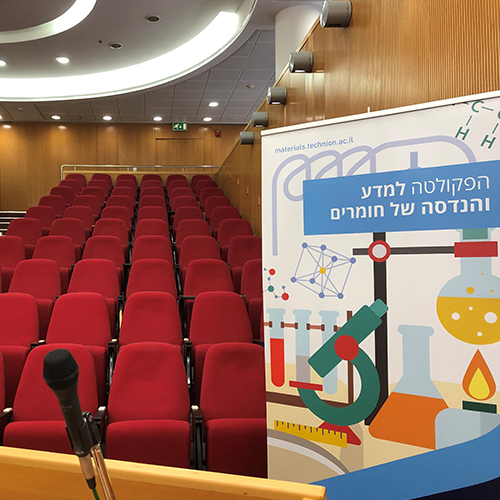
Mrs. Doaa Khorshid -M.Sc. candidate
25/02/2024
אודיטוריום ע"ש דויד וואנג, בניין מידן, קומה 3
14:30
Ferroelectrics are functional materials that exhibit reversible macroscopic polarization, which is the core of, e.g., contemporary biomedical and memory devices as well as cellular communication. Recent studies show that while the macroscopic dielectric properties of ferroelectrics are dominated by the polarization domains, domain walls can exhibit a broad range of surprising properties, such as magnetism, conductivity and even superconductivity. These unique characteristics that differ from the bulk behavior stem from aggregation of oxygen vacancies at the ferroelectric domain walls. Hence, there is a great motivation to understand the dynamics of these oxygen vacancies as well as to utilize them for novel technologies. Here, we used electron microscopy with in-situ temperature control and radiation-induced domain switching capabilities to show that the position of domain walls during the onset of ferroelectricity is dominated by persistent oxygen vacancies and is not random as was considered previously. Inspired by these results, we developed radiation detectors that are based on the mobility of oxygen vacancies that emerges only much above the ferroelectric-paraelectric transition temperature. These detectors operate at a range that is relevant to, e.g., the food-sterilization industry and is not covered reliably by competing detectors.
Advisor: Assoc. Prof. Yachin Ivry
Please bring your cup with you!
**ייתכן וההרצאה תמשך עד שעה 15:40


